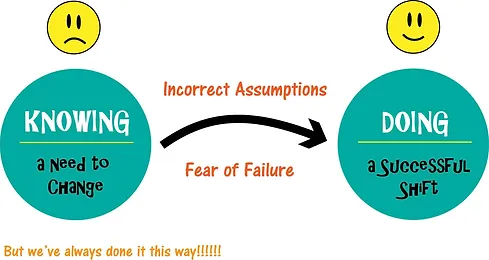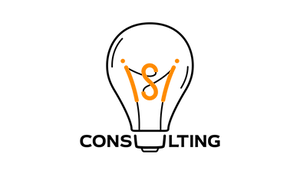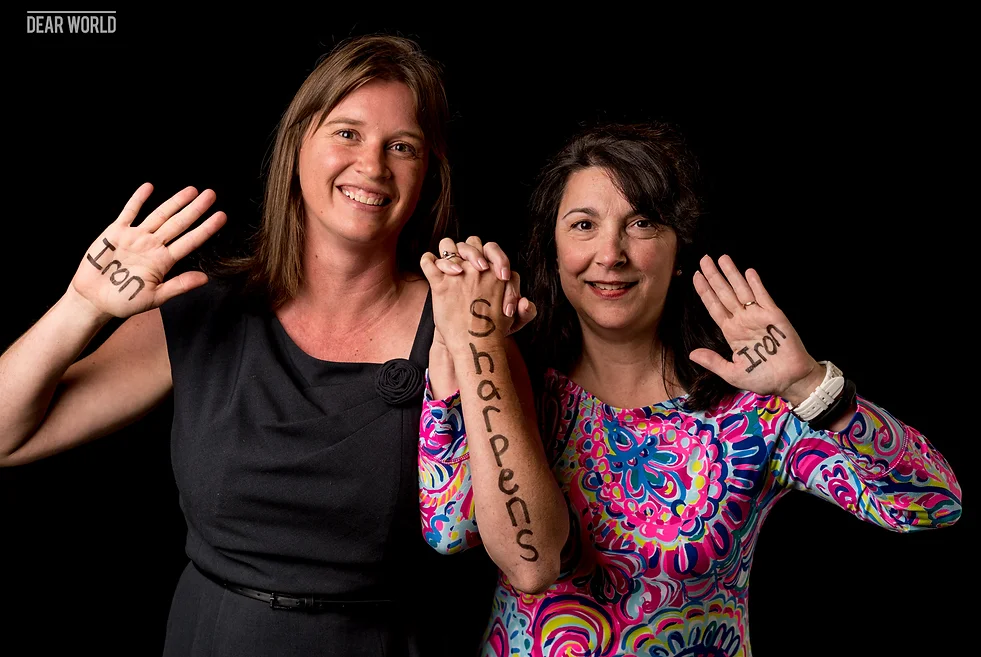I left a message for my mother today on her answering machine. Yes, her old-fashioned answering machine. No text message, no email. My mother has never owned a cell phone and refuses to do so. You will also not find a laptop, desktop, tablet, or noise-canceling headphones at her house. Cable and internet? Nope. None of it.
Now, the life of my 75-year-old mother may not be that practical for you. I understand that. My life, like yours, is filled with a host of electronic wizardry. However, in spite of her apparent disconnect, my mother is active, well-read, and engaged with friends and neighbors. And I believe she can teach us all something about our always-on world. Especially after two years in which the boundaries between work, home, school, our public lives, and our private lives largely dissolved.
Mama gives me the best present every single year. She gives me the gift of her undivided attention. The minute my feet step onto the peach carpet in her living room, she is focused on me. Just me. And that’s an incredible feeling. I have her complete and absolute attention. No distractions. No interruptions. She shares with me her current exercise routine at the YMCA (she left the Silver Sneakers because they were too slow). We discuss the latest book we read together, and then we often work together on a project. Sometimes, there is silence on our car rides to the local thrift store (she doesn’t listen to the radio). I can only describe it as peaceful. Thoughtful. Intentional. It is a rare and precious gift in our hyper-connected world.
Undivided attention means no distractions. I know it’s a challenge, but it can be done. It means we’ll have to ruthlessly eliminate the notifications, the to-do lists, and the right-nows from our day…if only for a few minutes. But our undivided attention is an incredibly precious gift for our co-workers, for our friends, for our families, and for ourselves. It’s a gift well worth the effort.
The Biggest Secret to Improvement
I’ve done it, and I know you have, too. Do you ever get back from a conference or full-day meeting and are so full of ideas that you want to implement right away in your organization? Like, right NOW! You have pages and pages of notes, photos of slides from your phone, and maybe even some clever tweets? Not to mention a thousand great ideas spinning in your brain. Yeah, me too.
The problem is we have a desire to improve, and we even have lots of great ideas about what to do. Unfortunately, we all too often fail to ever implement any of it. It’s called the “knowing-doing gap.”

In order to improve, at anything, we need to cross this “knowing-doing gap.” But how? One way is to actually create a gap after you consume lots of information or material. STOP. Yes, just stop. Make a commitment to not consume anything else until you create something with what you have already heard or read. But don’t just sit there. Think about what you’ve learned. How can I apply this material to myself or my organization? Is this relevant to where we currently are? Could someone else in my organization use this information or find it helpful? Once you’ve done some thinking, write down your thoughts. And then save what’s pertinent in a folder on your computer that you can access later to use yourself or share with others.
This one simple step can go a long way toward closing the knowing-doing gap and making sure we implement what we’ve learned. Let’s make a commitment to CREATE and DO more than we consume and know.
What’s Your Endgame?
As soon as our feet hit the boat last Wednesday at a North Myrtle Beach marina, Captain Dickey said: “Catch and release, or cornbread and grease?” My husband and I immediately replied “cornbread and grease” as we carried our bulky cooler on the boat. Captain Dickey’s direct question – before giving us any instructions for our very inquisitive eight-year-old son and “sassy” six-year-old daughter – struck me as clever, but also profound. What if we asked this simple question before we begin a conference? A training? The 50th webinar of the quarter? What is our endgame and are we prepared to consume and create? Are we here for “cornbread and grease” or “catch and release”?

As we traveled the beautiful Intracoastal Waterway and into the Little River jetties wrapped up in blankets (it was very cold at seven in the morning), I kept thinking about Captain Dickey’s question. I recall attending a training in San Antonio over nine years ago, when I was so excited to be invited to a community training. I came to the two-day training rested, with a blank composition book, some salty snacks (please don’t judge), and excited about the next two days. During those two days, I soaked up so much information from the trainers about methods and tools and asked lots of questions during the breaks, it was amazing. The carved-out time was void of checking-in to the office, checking emails or scrolling social media feeds. When I reflect on the training, I know that I walked in that room with a “cornbread and grease” mentality. I was hungry to learn, ready to receive, and even more important, open for applications in my every day life.
Unfortunately, all too often, those same expectations are missing from many of the trainings, and even week-long conferences, I’ve been afforded the opportunity to attend. Sadly, they were a complete waste and resulted in no changes. I didn’t articulate to anyone that I had a “catch and release” attitude, but my behaviors during and post-training sure reflected it. I consumed lots of information, and sometimes wrote notes, quotes and websites in pads which were never visited again. I don’t want that to happen again. How can I prepare myself before even walking in the training space? How can I, as a trainer, prepare others to be more equipped to apply information consumed? Let’s all take that “cornbread and grease mentality” for our next learning event and see what happens. Let’s be all in, and fully committed to catching something worthwhile.
I’m happy to report that all of the fish caught last week have been eaten! Bellies and hearts are full as our family begins another busy week of school, work, and this amazing thing called life.
No, I don’t mean flying saucers. I’m talking about Un-Finished Objectives. UFOs.
Don’t you do it. Don’t set one more goal, create one more plan, or make one more resolution until you’ve checked to see if you have any UFOs lying around your office. I know, as each year begins, you feel obligated to start something new. Everybody is doing it. It seems almost obligatory. But resist the urge. Because I guarantee you have some unfinished objectives gathering dust.
Pull out your strategic plan, action plan, or the compelling narrative you sent to a funder, and revisit your goals and objectives with your team. Your goals are probably still relevant and require little changing. And you probably completed some of your objectives, but what about the rest? The UFOs.
Instead of starting with a completely new plan, revisit those UFOs, and see which ones still need to be done, which ones need to be revised, and which ones need to be removed completely. This will take 45 minutes to an hour max with a small team. So why not host a UFO hunt sooner rather than later. I guarantee, key actions will be identified that will advance those goals that your team cares about. Cheers to eliminating one to two UFOs in your organization in the first three months!
Make your strategic plan count.
Most of us have had the fortune – or misfortune – of participating in a strategic planning session at some point or another. We all go into these with high hopes that we’ll exit with clear direction and new impetus for our organization. And we all know what usually happens. Nothing.
I suspect we’re all sick of retreats that result in a report that no one reads or even acts upon. Participants arrive back at the office and just stick the retreat binder on a shelf where it gathers dust. They continue with their daily activities without changing anything.
SPOTS (strategic plans on the shelf) gather dust and do not advance the mission of an organization. Why does this happen? Very often it’s simply because a strategic plan was completed to meet a funder or board requirement. Little time or thought is given to the process. Afterwards, the strategic plan just sits, never to be revisited, revised, or updated. Or implemented. Life goes on. And the organization stagnates.
So, what good is a strategic plan? In my opinion, it’s critical to an organization’s success. Strategy is a coordinated set of actions aimed at creating and sustaining your competitive advantage in carrying out your mission and realizing your desired future. What makes your organization stand out? What part of your fabric is different? What do you hope to accomplish and where do you want to be in one year, or five? It takes time and thought to determine the answers to these questions. This is a fundamental step in becoming a winning organization.
Strategic plans need to address the why, how, and what. The first phase often involves revisiting missions, conducting both an internal and market analysis, and solidifying your strategic advantage. After the why becomes clear, organizations can then dive into the how by designing vision elements, honestly discussing blocks and barriers, and determining strategic actions that will be crucial moving forward. And, lastly, the what occurs. This phase, which is the most often overlooked portion, actually lays out how the plan will be implemented with names, activities and success metrics assigned to each strategy. This is not possible to accomplish in a day, even for the most gifted facilitator.
If you have all three components, you will avoid producing a SPOT and instead produce a living document that is updated at least semi-annually and may change and expand based on the changing environment. Then the outcomes you discussed and dreamed about will become reality. Let’s embrace the strategic plan and commit to all the phases. Hold yourself and your team accountable for actions that will take place.
What Does Dirt Have to Do with Time Management?
Most of us start out the day with a full list of to-do’s. Some of us write out a literal list of items to tackle, others keep mental notes, and some simply respond the second a task comes across our desk or in a notification. But ask yourself a question. How’s that working for you?
It’s tempting to begin our day crossing off the most menial of tasks…responding to emails or making phone calls. We often think that if we first cross off all the small tasks, it will allow us to make room for the larger, more time-consuming tasks. Unfortunately, we all too often find ourselves at the end of the day with important, major items still unaccomplished.
There is a better way to prioritize tasks!
Think of your daily tasks as either rocks, pebbles, or sand. A rock might be a goal that is important to you, such as completing a report by the end of the week. A pebble is something you want to do but that doesn’t need to be completed ASAP. It might be a conversation you need to have about a potential upcoming project. Sand represents the small items in your day that when combined still take a chunk of time. Think email or returning routine phone calls.
Tackle rocks first, then pebbles, then sand. Divide your day by putting one or two of those most important rock tasks first, ensuring they are completed. Use pebble and sand tasks to fill bits of time between the rocks. Stay focused on the time you have blocked out for your critical rock task. Schedule time at the beginning of your day to work on your upcoming report. Also schedule time for a few pebbles you need to deal with now. Above all, watch out for those electronic distractions that plague our days. As notifications pop up on your phone or email, ignore them. Better yet—place your phone on “Do Not Disturb” mode! Then set aside one or two blocks of time during the day to deal with these items.
I recently conducted a time-management training and got some telling feedback. Joseph immediately applied this to his work and personal life told me, “I’ve definitely been much more productive at work and at home. I think the biggest takeaway for me was how important sequence is.” Rocks, pebbles, sand. It works.
We are about collaboration and continuous quality improvement. We are about celebrating both contrast and continuity. And above all, we are about clarity. That’s why Iron Sharpens Iron is becoming ISI Consulting.
You live, and you learn. When I started Iron Sharpens Iron Consulting nearly five years ago, I had some ideas of what I wanted to do, who I’d like to work with, and what those groups might accomplish. But after being fully immersed in this consulting business for some time, as well as bringing on others to assist our clients, it became clear our brand seemed “off”. We needed some clarity.

For starters, there was confusion over Iron Sharpens Iron as our name. No, we are not welders. Or blacksmiths. In fact, we have nothing to do with metal. Because our name didn’t say it, no one knew we were actually consultants. And, yes, I know “iron” is funny-sounding, especially when you say it twice quickly. Above all, most people simply didn’t catch the Scripture reference to Proverbs 17:17, “As iron sharpens iron, so one person sharpens another.”
The time to change had come. I wanted a brand that spoke to what our consulting business really does, so both current and potential clients didn’t have to solve a puzzle. A brand that speaks to who we are and what we’re about. I wanted a look that made me smile and yet also motivated me to push harder. And I still wanted “irons sharpens iron” somehow infused into our identity, because I truly believe we are all sharper together.
So that’s how this all came about. We now have a name – ISI Consulting – that better reflects what we do. A bright new logo to illuminate our work. And a fresh palette of colors to portray the energy and excitement we bring to each and every project.

Two Women and a Marker
In 2009, sitting in one of the beautiful spots at Big Bend National Park overlooking the Rio Grande River, I wrote in my journal that one day I would own my very own consulting business. It was one of those crazy goals written on paper (you know it’s important to write your personal goals down, don’t you?), and hidden in my heart for several years. Finally, the dream became a reality, and it even had a name…Iron Sharpens Iron.

Iron Sharpens Iron is based on the scripture in Proverbs 27:17 that says: “As iron sharpens iron, so one man sharpens another.” This scripture has always resonated with me, as I reflect on each of the individuals that have sharpened me throughout my life.
Interestingly, the root word for sharpens actually means “to cut”. On my improvement journey, that has meant cutting out what is not essential in order to sharpen what is. Some of my ideas have been challenged, my perspectives have changed, and my understanding and knowledge of topics have grown. I treasure and appreciate the iron in my life (even though sometimes, I don’t appreciate it until later, if I’m really being honest), and desire to share what I have learned with others.
Susan Witkowski, the CEO of the Community Medical Clinic of Kershaw County, is a great honing tool and mentor in my life. That is no better illustrated than with an example from a conference we both attended in 2016. Participants were tasked with sharing a message to the world, with just themselves and a black marker. Together, we immediately realized that our message to the world was “iron sharpens iron.” You shouldn’t attempt to advance your mission by yourself…we are most effective when we help sharpen each other.
And thus, my fledgling consulting business finally had a name…Iron Sharpens Iron. After years of toying with various possible monikers (over the years, there were probably two dozen contenders) I had a name that reflected my passion and the vision of what I could accomplish. Thanks to the skills of Robert X. Fogarty, Dear World’s founder and amazing photographer, I had visual image that encapsulated all Iron Sharpens Iron could be.